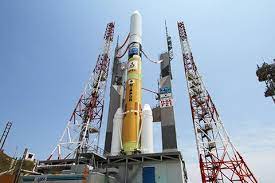XRISM Mission And SLIM Lander: Japan

Japan readies to launch a dual-purpose mission from one rocket, deploying SLIM to showcase precise moon landing techniques and XRISM for enhanced celestial analysis.
XRISM Mission:
- The X-Ray Imaging and Spectroscopy Mission (XRISM) is a joint mission of the Japan Aerospace Exploration Agency (JAXA) and the National Aeronautics and Space Administration (NASA), involving contributions from the European Space Agency (ESA) and Canadian Space Agency as well.
- Objective of the mission aims to observe X-rays coming from deep space and to identify their wavelengths with unprecedented precision.
- It will use state-of-the-art spectroscopy to measure changes in the brightness of celestial objects at different wavelengths.
- It detects X-rays with energies ranging from 400 to 12,000 electron volts. (For comparison, the energy of visible light is 2 to 3 electron volts.)
- This range will provide astrophysicists with new information about some of the universe’s hottest regions, largest structures, and objects with the strongest gravity.
- Instruments onboard: The mission has two instruments, Resolve and Xtend.
- Resolve is an instrument that will collect spectroscopic data with far more resolution than X-ray observatories orbiting the Earth do.
- Xtend will operate simultaneously to photograph the cosmos with a resolution comparable to the way our eyes might perceive it if we were to have X-ray vision.
- While Resolve zooms in, Xtend will zoom out, providing scientists with complementary views of the same X-ray sources over a larger area.
SLIM:
- SLIM, or Smart Lander for Investigating Moon, is a compact robotic moon lander with no astronauts aboard.
- Called ‘Moon Snipper’ in the Japanese language, it has lightweight equipment for advanced observations and adaptable landings on resource-scarce planets, advancing exploration strategies.




